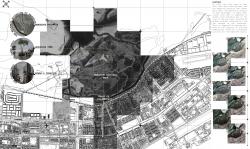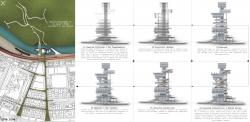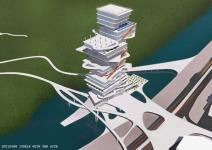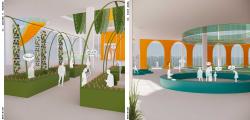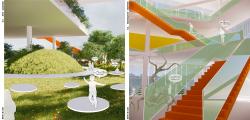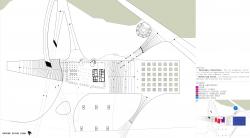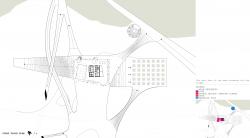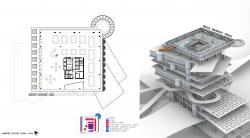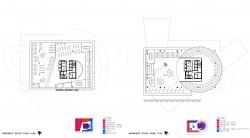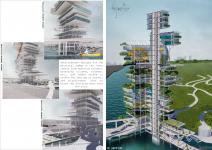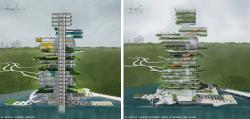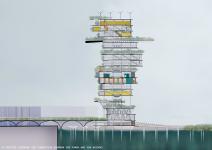Due to technological development, humans started to search for more efficient methods to sustain themselves. These developments led to more permanent settlements that required more resources to fuel the expansion, leading for a distance from nature. With the development in agriculture, settlements became more permanent and cities started to take shape, which created our obsession in the twin forces; industrialization, and urbanization, resulting in a new perception of nature to be an object that we can control and harvest for financial benefits.
The term “Mangrove” refers to a tidally affected wetland ecosystem within the intertidal zone of subtropical and tropical latitudes. Mangrove ecosystems, called “Mangal”, consist of diverse habitats with a significant set of plants and animals adapted to the environmental conditions of frequently inundated, highly salty, and soft-bottomed anaerobic mud.
The mangrove covers more than 150 km of the UAE’s coastline, acting as a “green lung” of the big Emirati cities such as Dubai and Abu Dhabi. In the chosen site, which is Abu Dhabi’s Mangrove National Park, the biggest natural green body in the city, there is a barrier that prevents people from reaching the mangrove area, weakening the relationship between human and nature. Not forgetting the fact that the site is located next to one of the busiest highway roads of Abu Dhabi, making it almost abandoned since it limits the number of visitors. Furthermore, the current health status of the mangrove in that site is deteriorating by 20%, ranging between 15% in moderate health, and 5% in poor status.
Therefore, a sufficient amount of care should be given to the “Life Provider”, by spreading the awareness of its importance among people, through creating a direct and indirect connections with the environment and providing them with multiple different activities for a more sustainable future. Here comes the challenge, finding out if architecture can be the answer to achieve a successful Human & Nature Relationship where human and nature could co-exist. Al Selah is a place specializing in developing knowledge and productivity, and aiming to break the barrier between the city and the mangrove, letting people to go more through its ecosystem. The project is proposing an alternative with all the greenery benefiting as much as possible from the mangrove, by creating four main elements consisting of Cultivation Areas (for mangrove and other crops), Research Centre, Garden Bridge, and Connective Walkways.
Al Selah acts as a vertical folly with different levels of interactions between people and the mangrove through:
1. A vertical concentration of green spaces
2. A bridge that brings nature into the city
3. Skywalks and sky gardens that allow people to interact with the mangrove in different levels
4. A series of vertical follies that offers a unique experience to users, and allows for 360 view of an important component of Abu Dhabi’s natural and cultural landscape.
Beside the intention of creating various connections, the project consists of several environmental elements, such as:
1. Wind turbine: wind energy converter into electricity, located in the north-west direction, as it is the best direction in UAE for wind.
2. Solar panels: converts solar radiations or sunlight into the electricity, located toward the south direction, which is the optimum orientation for solar panels in UAE.
3. Mangrove pods, where studies showed that the mangrove has the ability for water desalination by its leaves by perspiration.
4. Greenhouse Dock: Once the crops are grown, the greenhouse vehicles, charged by PV charger, can transport the crops into the market by being computer controlled.
The other main functions of the project are farming areas, seeds library (Donation, and sharing different types of seeds for farming), markets, exhibitions, communal spaces, kayak/ water sport club, research center, and observation decks.
“Good architecture lets nature in” - Mario Pei
Concept:
The concept took its approach by starting with the garden bridge, that goes toward the city, and the walkways, that go through the Mangrove National Park. The garden bridge aims to bring nature into the city and reconnect people with the mangrove. Its design started by the two angles that exist in the site, whereas the walkways, that aim to get people through the mangroves, are designed following the different movements of the mangroves. Thus, a difference between both designs was noticed, in which “The Straight Line Belongs to Man, The Curved Line Belongs to God” Antonio Gaudi’s statement came in. Since then, the design development of the tower (the heart of the project) and the different components started by attempting to represent humans’ creations (straight, edges, & “perfect” geometries) and the roots of the mangrove tree (connections, curves, & fluidity).
2020
0000
Location: Abu Dhabi's Mangrove National Park, Abu Dhabi, UAE
Area: 23,710 square meters Approx.
Dima Banat
Instructor: Dr. Basem Eid M.


